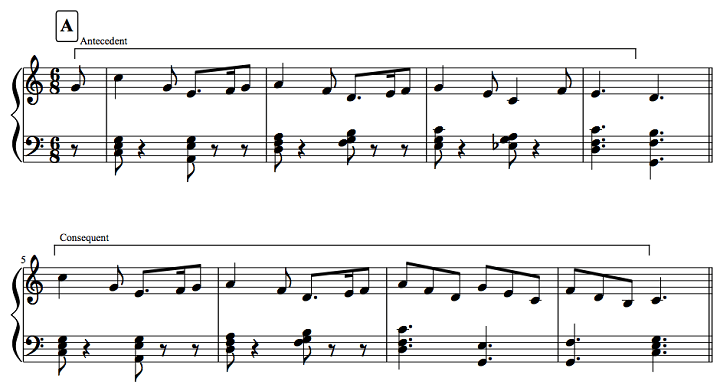The ternary form, which has three parts, is what the term “song form” refers to. The first part (A) comes back after the second part (B) is over. The A–B–A schema is often used to show it. There are many examples, such as “The trumpet shall blow” from Handel’s Messiah. Another piece is Chopin’s Prelude in D-flat Major, Op.
How is “Twinkle, Twinkle, Little Star” put together?
Young children can easily see the ternary form in the song “Twinkle Twinkle Little Star.” This type of music (ABACA or ABACADA) has one central theme (A) that is accompanied by several themes (B) that clash with it (B, C, D)
In many songs, the first section, marked by the letter A, is followed by a quote, marked by the letter B, that is more discordant than the first. ABA The piece comes to an end when the A section comes back. The song “Twinkle, Twinkle, Little Star” is a simple example of the ABA form. Even though this is a simple tune, the parts are often much longer in classical music than they are here.
What does history have to say about jingle bells?
Some say that James Lord Pierpont sang the song for the first time in 1850 in Medford, Massachusetts. Since Pierpont was from the area, he wanted to write a story about the Thanksgiving Day sleigh races to honor them.
Sleigh bells, also called jingle bells, are a type of bell that makes a distinctive jingling sound during the holidays. They are part of the family of percussion instruments. The jingling sound in each bell is caused by a small ball bearing or a short metal rod made from a flat piece of metal bent into a sphere. Scientists are trying to figure out how our brains let us hear and make music. When a song is played on a stereo system, vibrations are made that move through the air and into the ear canal. These vibrations turn the tingling in your eardrum into an electrical signal. The auditory nerve puts it back together into something that sounds like music in the brain stem.
Researchers from Johns Hopkins University put hundreds of jazz musicians and rappers in an fMRI (functional magnetic resonance imaging) scanner and had them make up music on the spot. Researchers looked at musicians’ brains because they wanted to know which parts were active during the process.
A piece of music is put together using math and architecture. It is based on how the notes themselves fit together. Even if you don’t realize it, your brain has to do a lot of work to figure out what it means.



